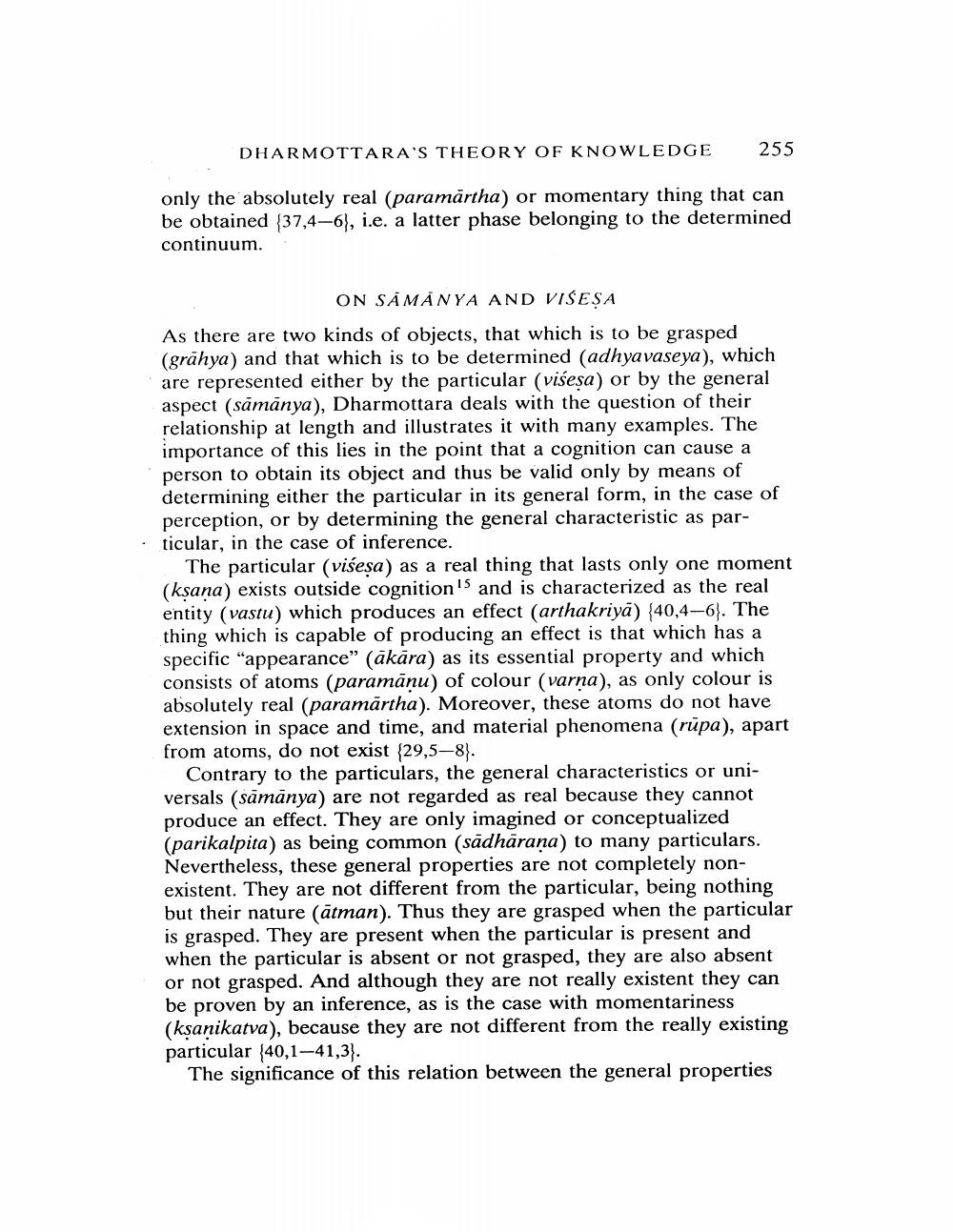Book Title: Dharmottaras Theory Of Knowledge In His Laghupramanyapariksa Author(s): Helmut Krasser Publisher: Helmut Krasser View full book textPage 9
________________ DHARMOTTARA'S THEORY OF KNOWLEDGE 255 only the absolutely real (paramartha) or momentary thing that can be obtained (37,4-6), i.e. a latter phase belonging to the determined continuum. ON SAMANYA AND VIŠESA As there are two kinds of objects, that which is to be grasped (grahya) and that which is to be determined (adhyavaseya), which are represented either by the particular (visesa) or by the general aspect (sāmānya), Dharmottara deals with the question of their relationship at length and illustrates it with many examples. The importance of this lies in the point that a cognition can cause a person to obtain its object and thus be valid only by means of determining either the particular in its general form, in the case of perception, or by determining the general characteristic as particular, in the case of inference. The particular (višesa) as a real thing that lasts only one moment (kşana) exists outside cognitions and is characterized as the real entity (vastu) which produces an effect (arthakriya) (40,4-6). The thing which is capable of producing an effect is that which has a specific “appearance" (akāra) as its essential property and which consists of atoms (paramāņu) of colour (varna), as only colour is absolutely real (paramartha). Moreover, these atoms do not have extension in space and time, and material phenomena (rupa), apart from atoms, do not exist (29,5–8). Contrary to the particulars, the general characteristics or universals (sāmānya) are not regarded as real because they cannot produce an effect. They are only imagined or conceptualized (parikalpita) as being common (sādhārana) to many particulars. Nevertheless, these general properties are not completely nonexistent. They are not different from the particular, being nothing but their nature (ātman). Thus they are grasped when the particular is grasped. They are present when the particular is present and when the particular is absent or not grasped, they are also absent or not grasped. And although they are not really existent they can be proven by an inference, as is the case with momentariness (kşanikatva), because they are not different from the really existing particular (40,1–41,3}. The significance of this relation between the general propertiesPage Navigation
1 ... 7 8 9 10 11 12 13 14 15 16 17 18 19 20 21 22 23 24 25
